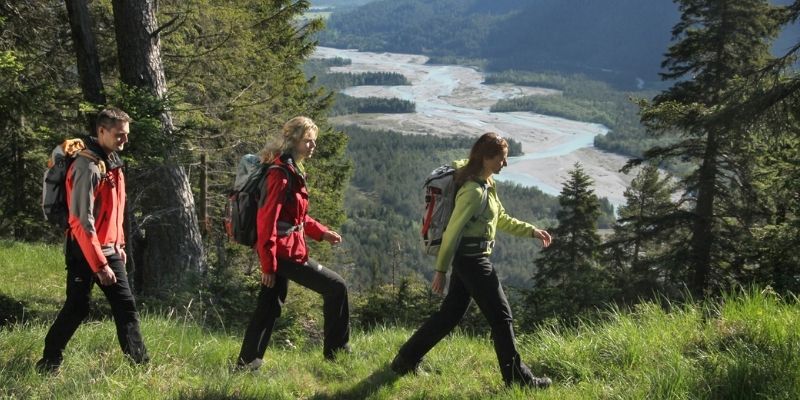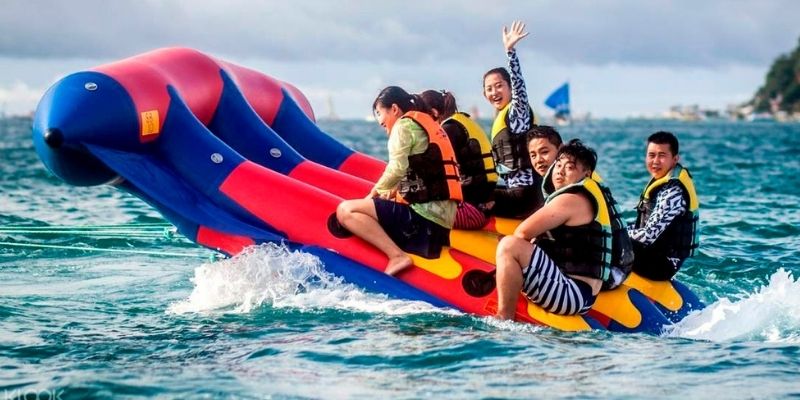Using Google Flights To Find Cheap Flights In 2023? All That You Need To Know!
BY Barsha Apr 18, 2023
While there are multiple search engines for finding cheap flights - maybe you use a tool like Hopper or Skyscanner or depend on a travel agency online such as Expedia or Priceline. But there’s one option that’s always better than the rest - yep, we are talking about Google Flights. Yep, that’s right! Google is undoubtedly the best search engine in the world today - and it doesn’t fail to impress when it comes to finding cheap flights. It’s a crazy tool - and it comes with multiple features that will help you find the best prices. And not just that - thanks to its Price Guarantee feature, if the flight fares drop after the booking has already been made, you might get a refund. It also comes with a variety of filters that can be used for finding the best flights that you want in reality. And at the same time, avoid the flights you don’t want to check out. Additionally, you can definitely use this tool for searching different carriers and directly booking any airline as compared to other third-party websites. Today, we are here to help you find out how to use Google Flights - the tips and tricks you need to find the best deals online. But First, What Are Google Flights? Why will you waste time looking up ‘flights Google’ on Google when you can directly book flights on Google Flights itself? So, what are Google Flights? Google Flights can be defined as a type of metasearch engine that uses a global distribution system for tapping into the different flight inventories offered by all airlines in the entire world. You cannot define the same as an online travel agency or OTA like Orbitz or Priceline. How Do Google Flights Work? Before you book yourself a GG flight, let’s find out how this is work. This is basically a type of metasearch engine that uses different itineraries, seating orders, and flight schedules to display multiple flight prices on hundreds of tickets, inclusive of taxes. The metasearch engine uses different information on extra fees for avoiding baggage fees as well as basic economy. Once you determine the flight you need, you can directly book with your preferred airline or any travel agency online. Google Fights is basically a search, too, like Google itself - technically, you are not really booking flights via Google. Top Tips For Using Google Flights: Are you already busy typing ‘Google flights San Diego’ or some other location? Then stop! Because we have six top tips that will help you to use this - stay tuned to find out more! 1. Filter For Stops To Get The Flights You Want: Flying non-stop is an ideal situation. Google Flights, in fact, make it pretty easy to look for nonstop flights - there’s a filter dedicated to finding the best nonstop flights. At the same time, it is crucial to remember that one-stop flights can help you save on costs, especially if you are flying internationally. 2. Search For The Airlines You Want: Are you a diehard United fan? Or do you prefer flying on Delta? Google Flights can help you narrow down search results to certain airlines. 3. Search Multiple Cities To Find Better Deals: Google’s ability to search multiple destination cities and departure points is completely unparalleled. It is pretty useful when you are seeking international flights, and you are confused about whether you should fly straight to Venice or first stop at Rome. Other Things That You Can Do: Apart from the tips we have mentioned in detail above, scroll down and find out what else you can do while using this. Using Google Flights to explore, Using Price Alerts, and Watch your carbon footprint. What Is The Best Way To Book Cheapest Flights On Google Flights? During the holiday season, it is quite important to have the bookings of the flight at a lower rate so that you don’t spend all your money. It is also important to consider that there are certain tools that are appropriate in overall using the application! Insights On The Cheapest Time! While following Google Flights, you get to evaluate an average on the same route of travel! When booking flights, it is also important to learn about the lower prices on a regular basis so that you can select the specific days when the fares are at their lowest. The upgraded insights are being launched by Google Flights as they use reliable trend data based on the chosen destination and dates. Further, you can also curate your itinerary by following the insights. Price Tracking! If you turn on the price tracking, it will help you evaluate the lower fares of the flights along with the overall significance of the price drops. You will learn about the evaluation of the prices along with the way flexibility becomes an important part of this process. For example, if you have to attend an event after 6 months, it will help you a lot if you deal with the bookings by putting specific dates and tracking the prices. This will lead to you understanding the way the feature will help you to have a cheaper booking price. Price Guarantee! When you search for flights on Google Flights, you will find some colorful price guarantee badges. This is to ensure that the flights that are with that tag show prices that will not go lower. Hence, you can finalize on the booking of the flights. With this tag, you can also monitor the prices of flights before takeoff! It will help in managing the differences on Google Pay. It is a pilot program hence, not available with all departing flights. Exploring Google Flights: Pros And Cons! Before you get all excited and Google flights to Las Vegas, it’s only practical to find out the pros and cons of this metasearch engine. Scroll down and find out the pros and cons of booking flights with the help of Google Flights. Pros Of Google Flights: Just for the simple reason that this is not really an OTA, it is anyway better than almost all other tools. So before you can look up ‘Google flights Las Vegas,’ let's check out the top advantages of using this search engine. You can pretty much always directly book with any airline of your choice. You might come across multiple options for booking with different other sites, but at the same time, cutting out in-between costs while booking flights is more crucial than ever. Dealing with any airline agent is always better than dealing with bad customer support from some small online travel agency. Google Flights will enable you to look for multiple airports simultaneously, thereby helping you to find the cheapest airport to fly to or depart from, for that matter. And isn’t that the key to saving money on flights, especially when you are flying internationally? None of the search engines will do a better job when it comes to showing months' worth of flights, especially when you are trying to land the cheapest airline deals. You will even get notified if shifting your travel dates by a day or two can save reduce your expenditure. Cons Of Google Flights: Having noted down all the pros of using this, you might already be typing ‘google flights Seattle’ or some other location, but wait! this is not entirely perfect. It is close to perfect, but there are certain drawbacks. These drawbacks are as follows, Since Google Flights depend mostly on featuring airfare from the different airlines directly, you can, at times, come across cheaper fares via OTAs that end up cutting deals with various carriers for listing highly discounted flights. Google is almost always updating the inventory of different available flights. Occasionally, we might stumble upon certain issues that arise from outdated pricing. This means you might come across a price that you like, only to click and find out that the price has gone up. While a majority of flights are available through Google Flights, only a handful don’t really list their fares or on other search engines, for that matter. And It’s A Wrap! Google Flights is one of the coolest apps that we can use if we have regular flight business! The tools available help in utilizing resources along with making it easier for us to spend the right amount of money! And that’s a wrap on the Google Flights. What are your thoughts booking Google Flights? And while sharing your thoughts, don't forget to share your experiences associated to Google Flights in the comments below. Read Also: Aainflight Review- Login, Services And Travel Experiences Myenvoyair Review – Registration, Login And Benefits In 2023 How To Save Money By Using Cheap Parking Near O’Hare Airport?



















